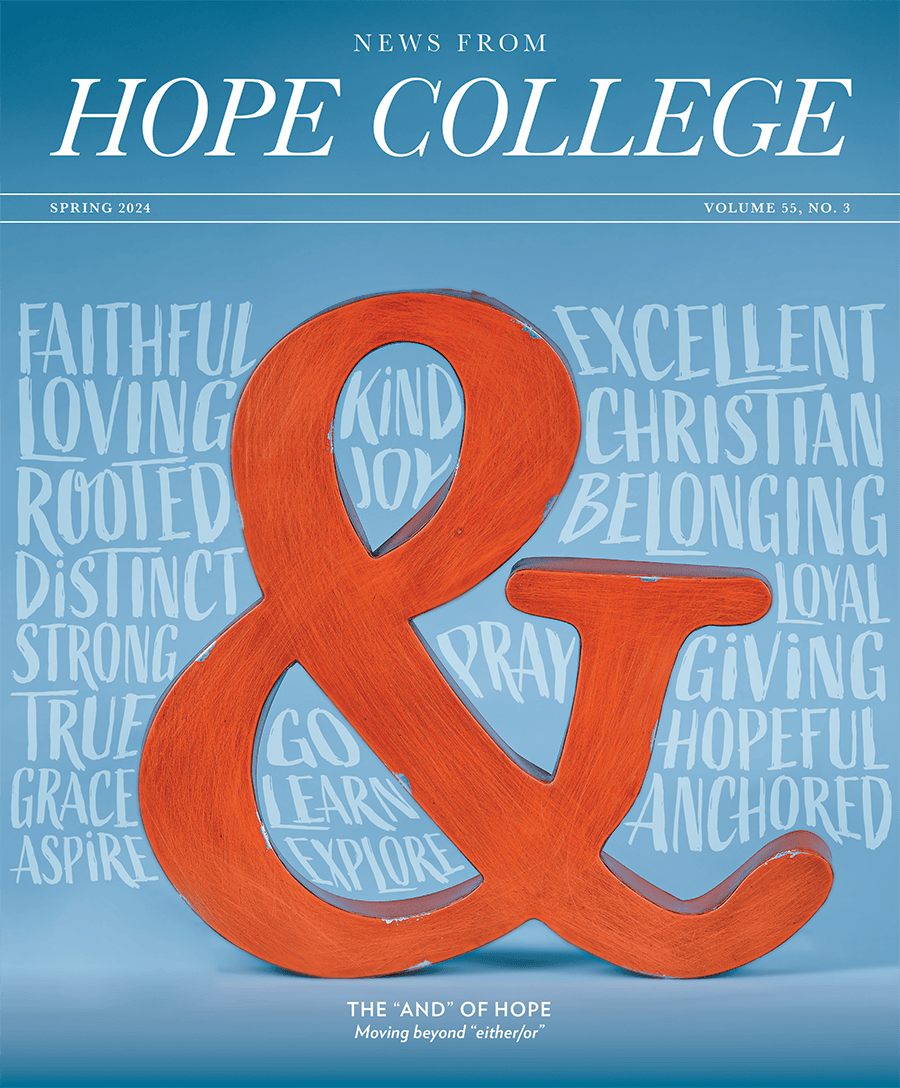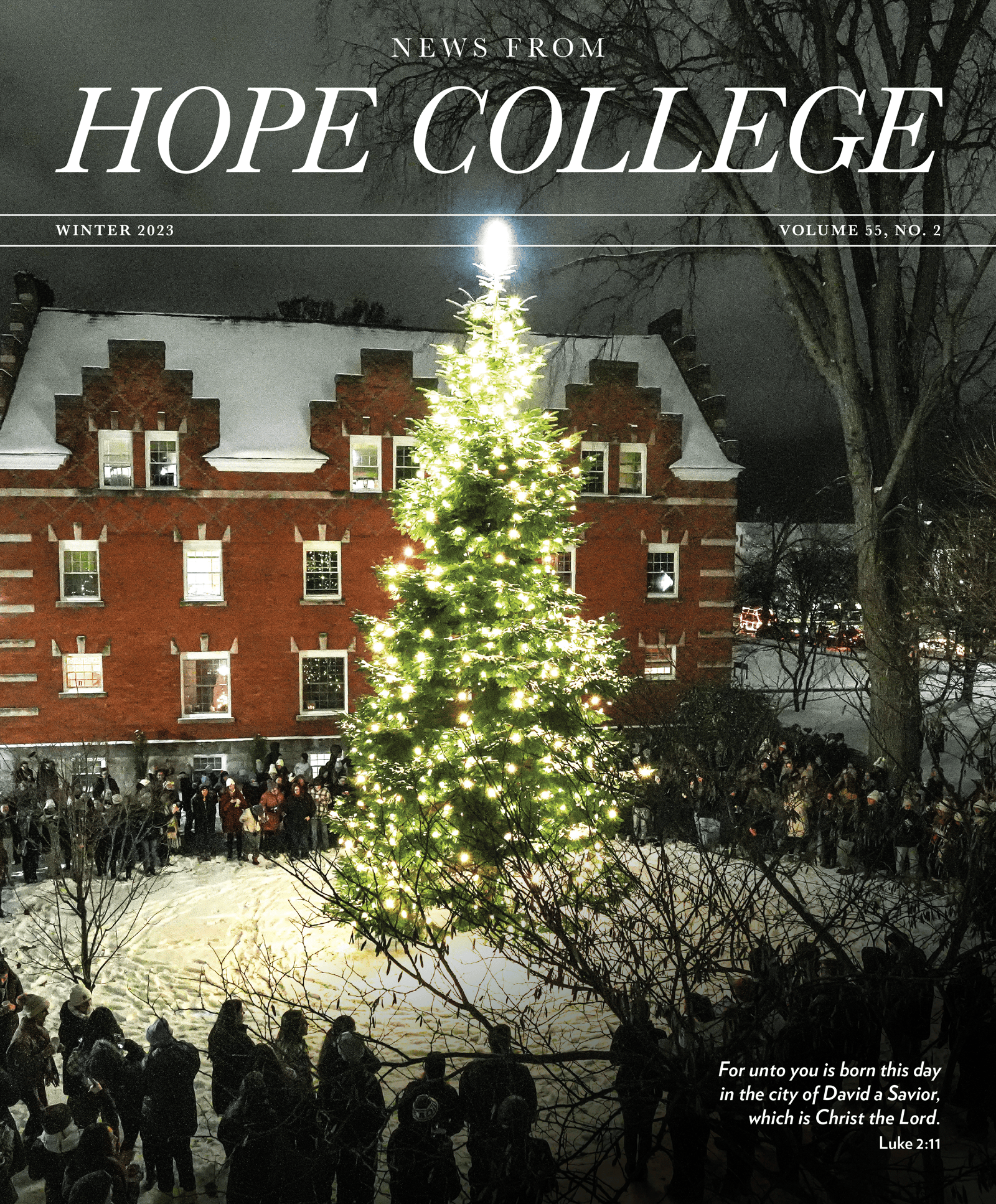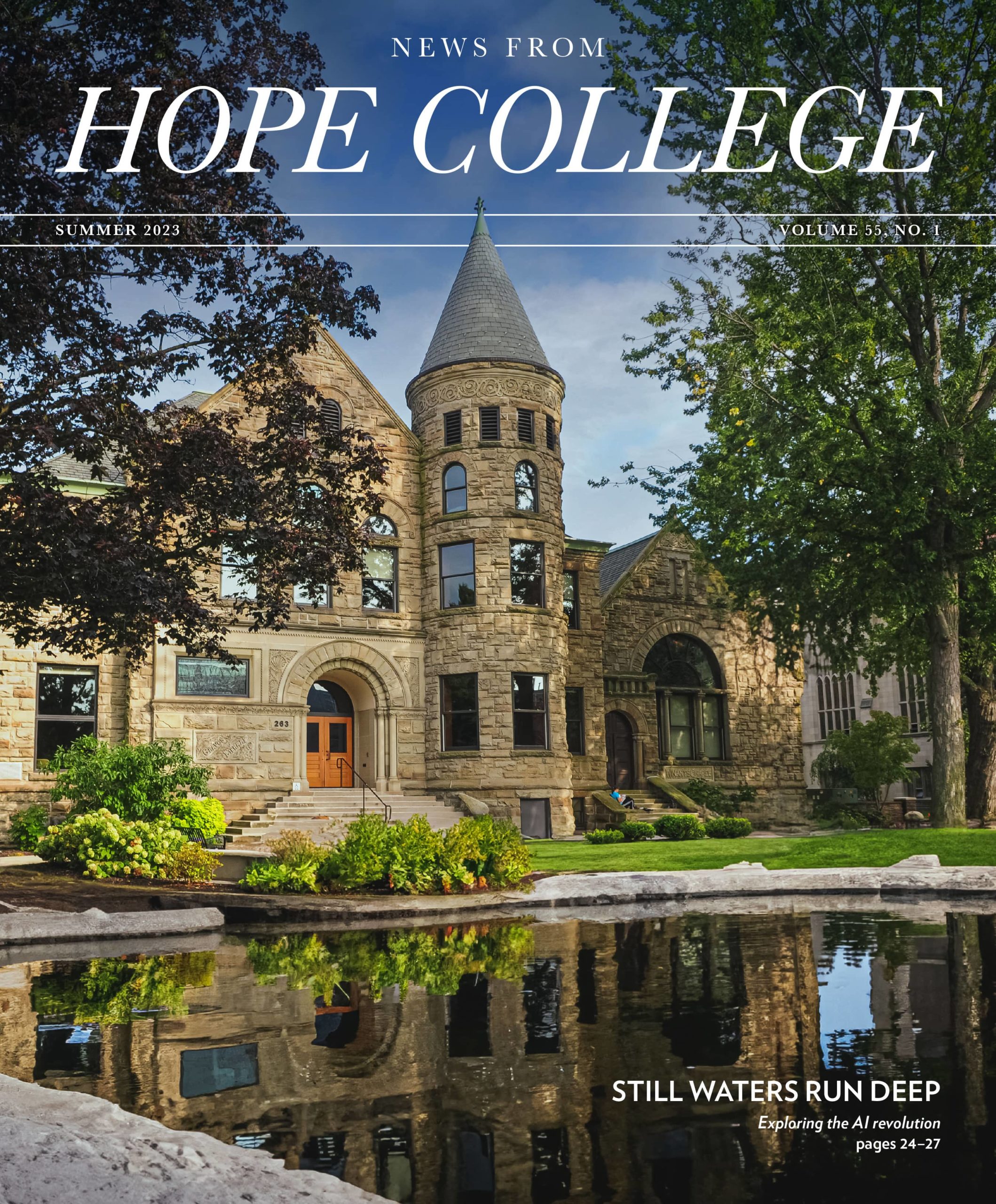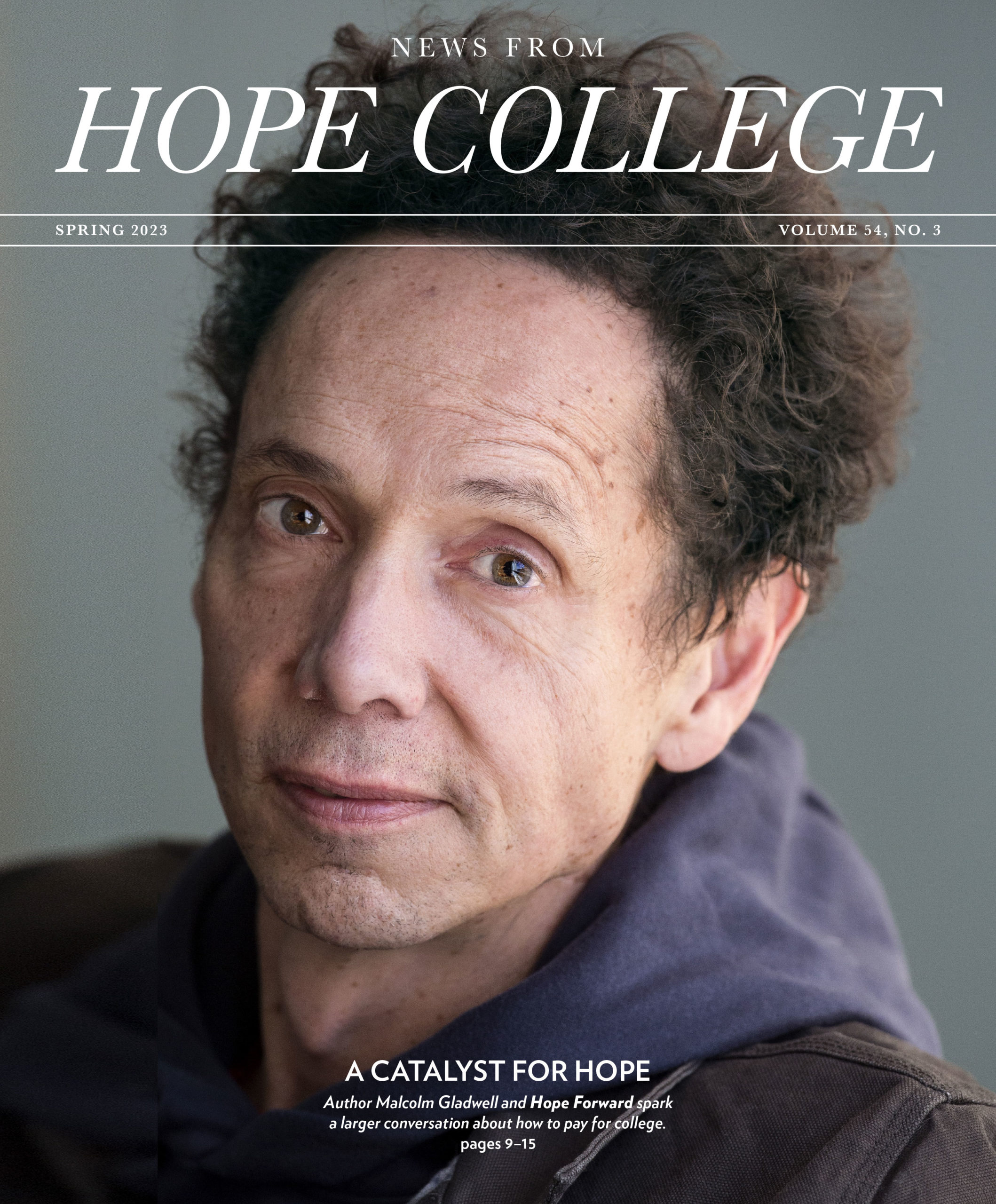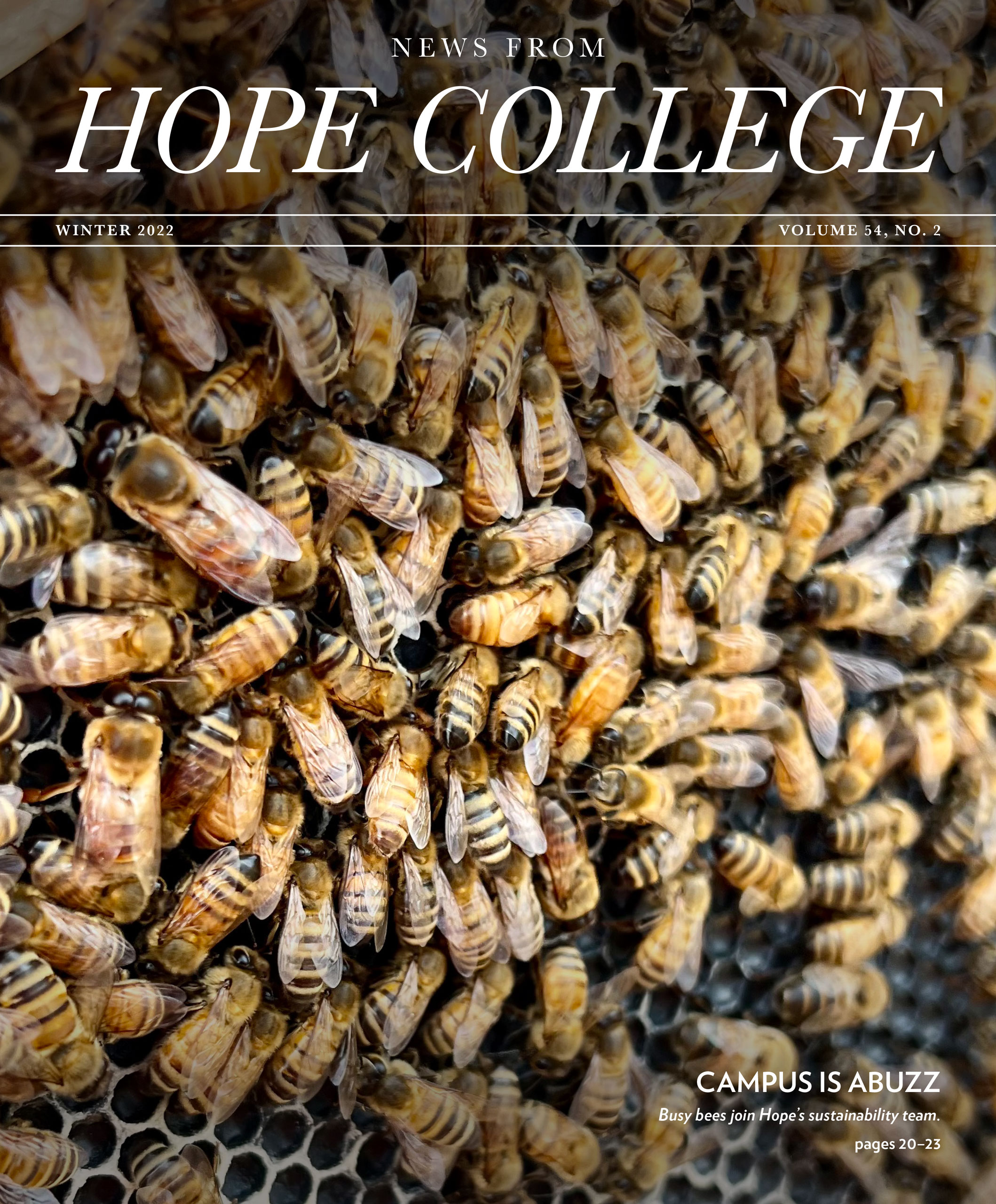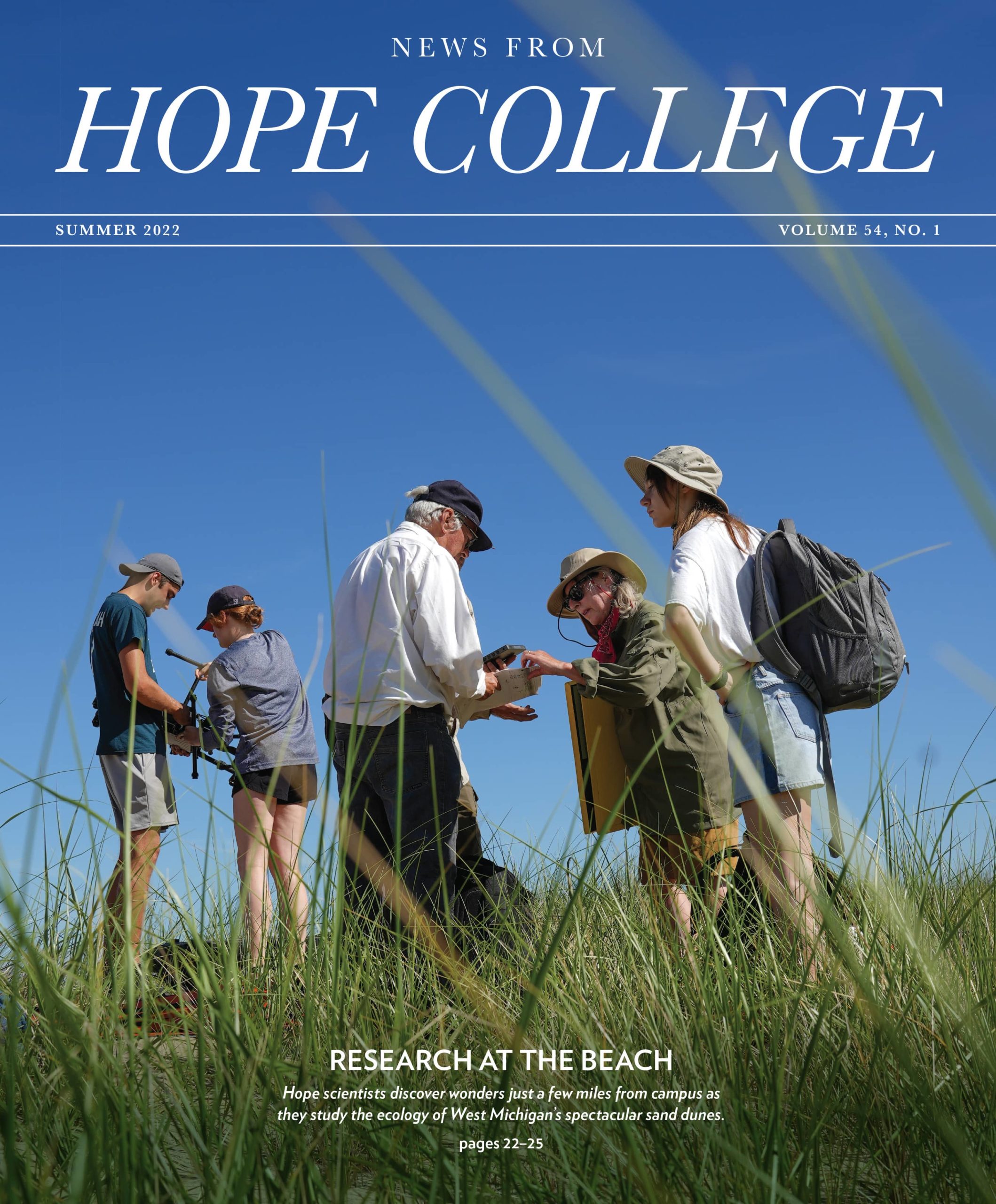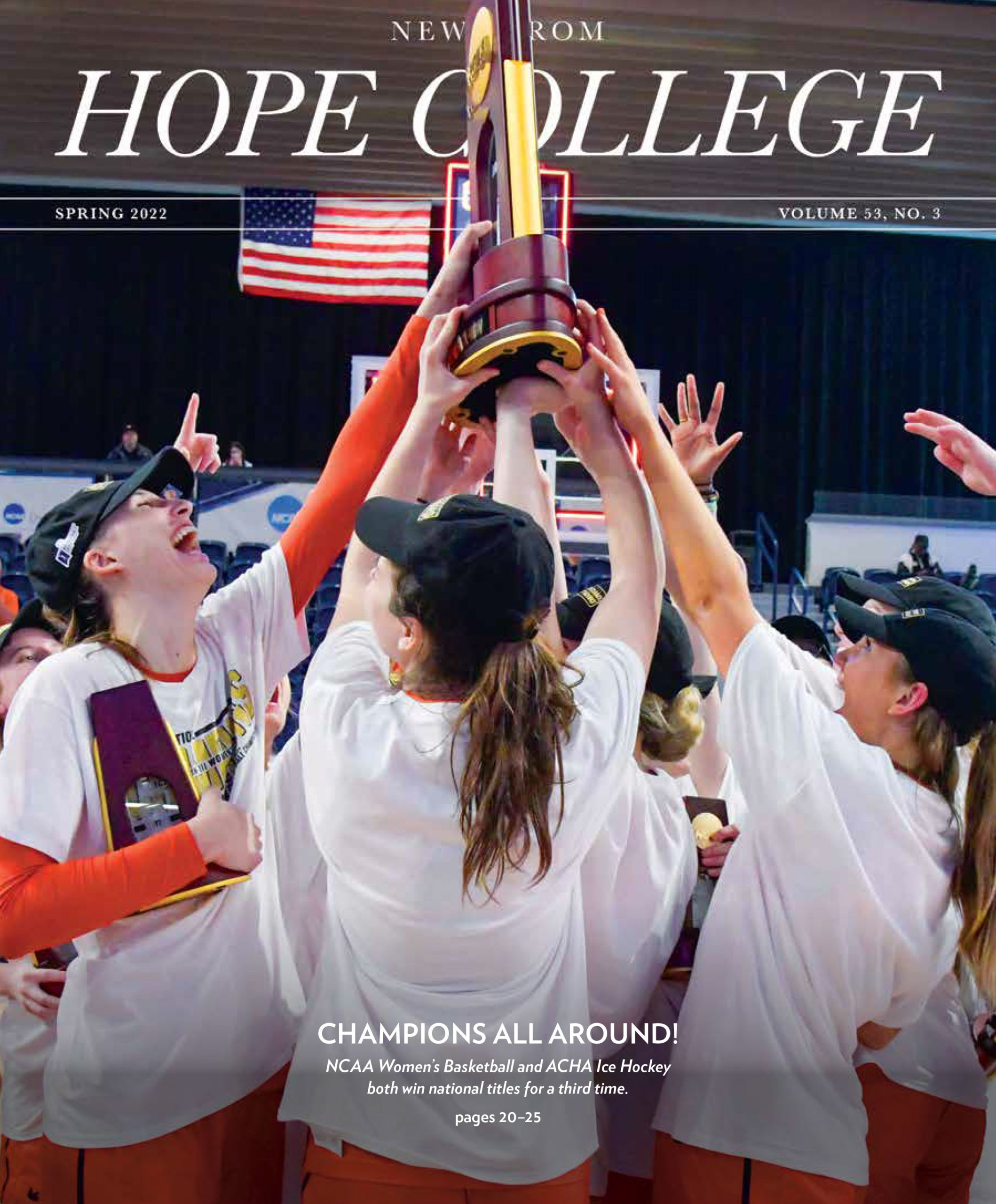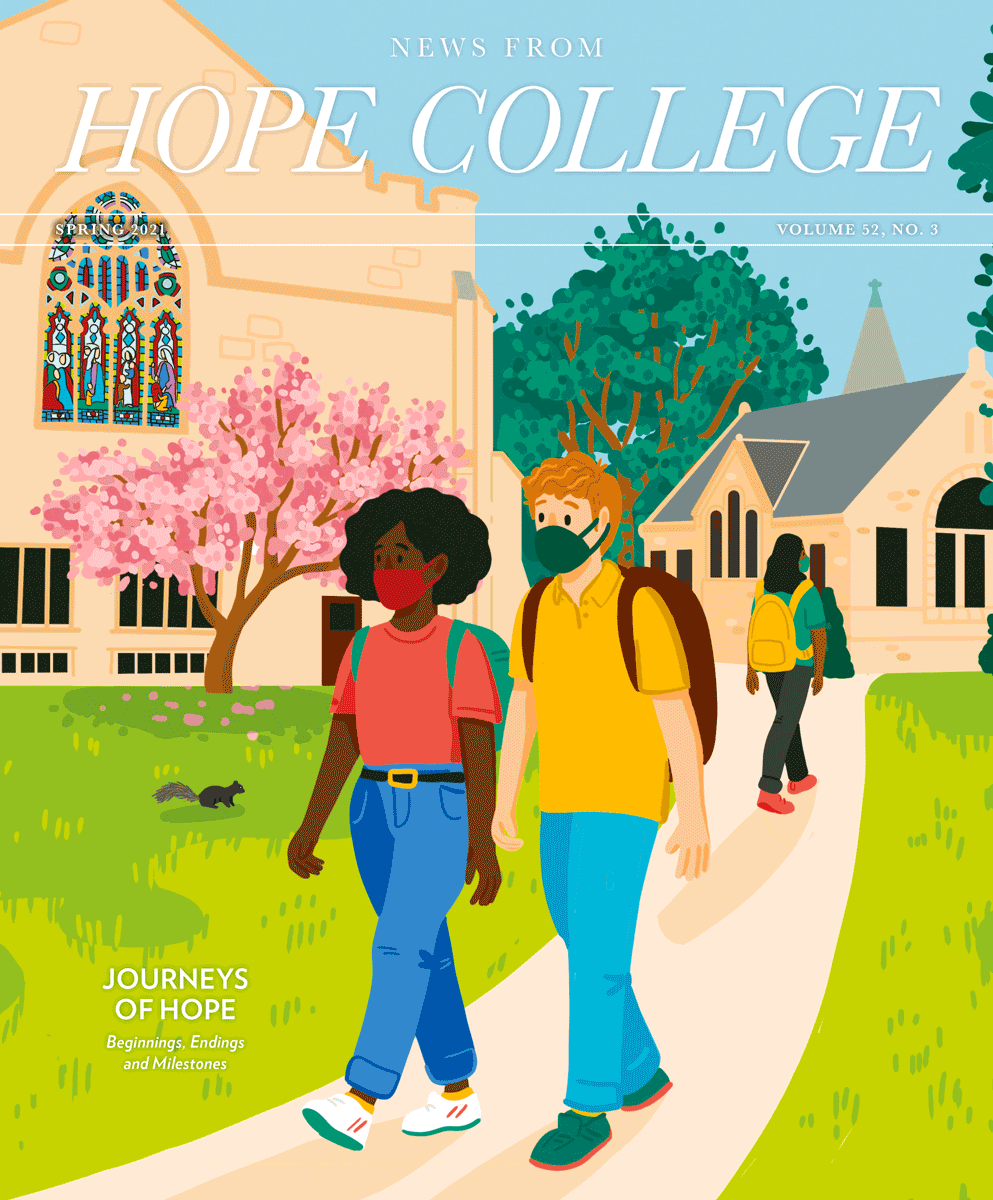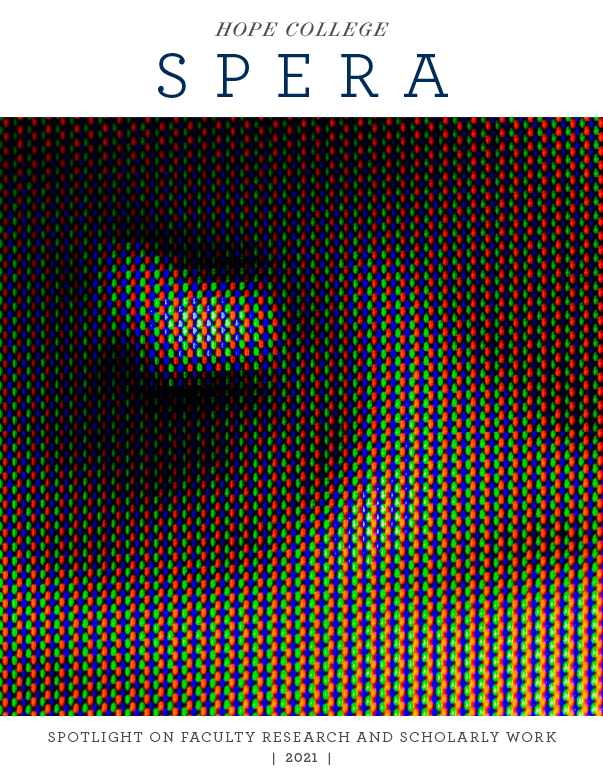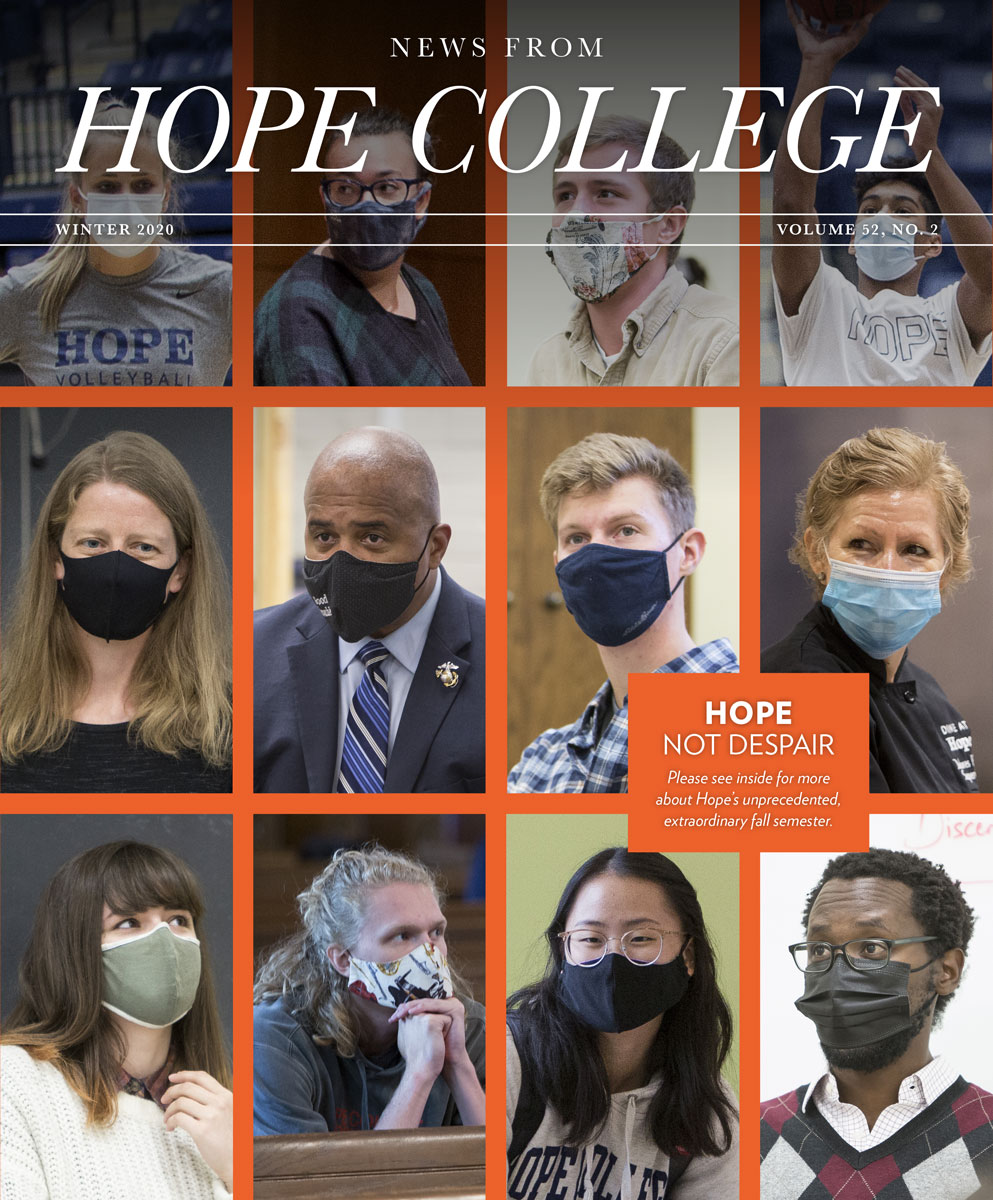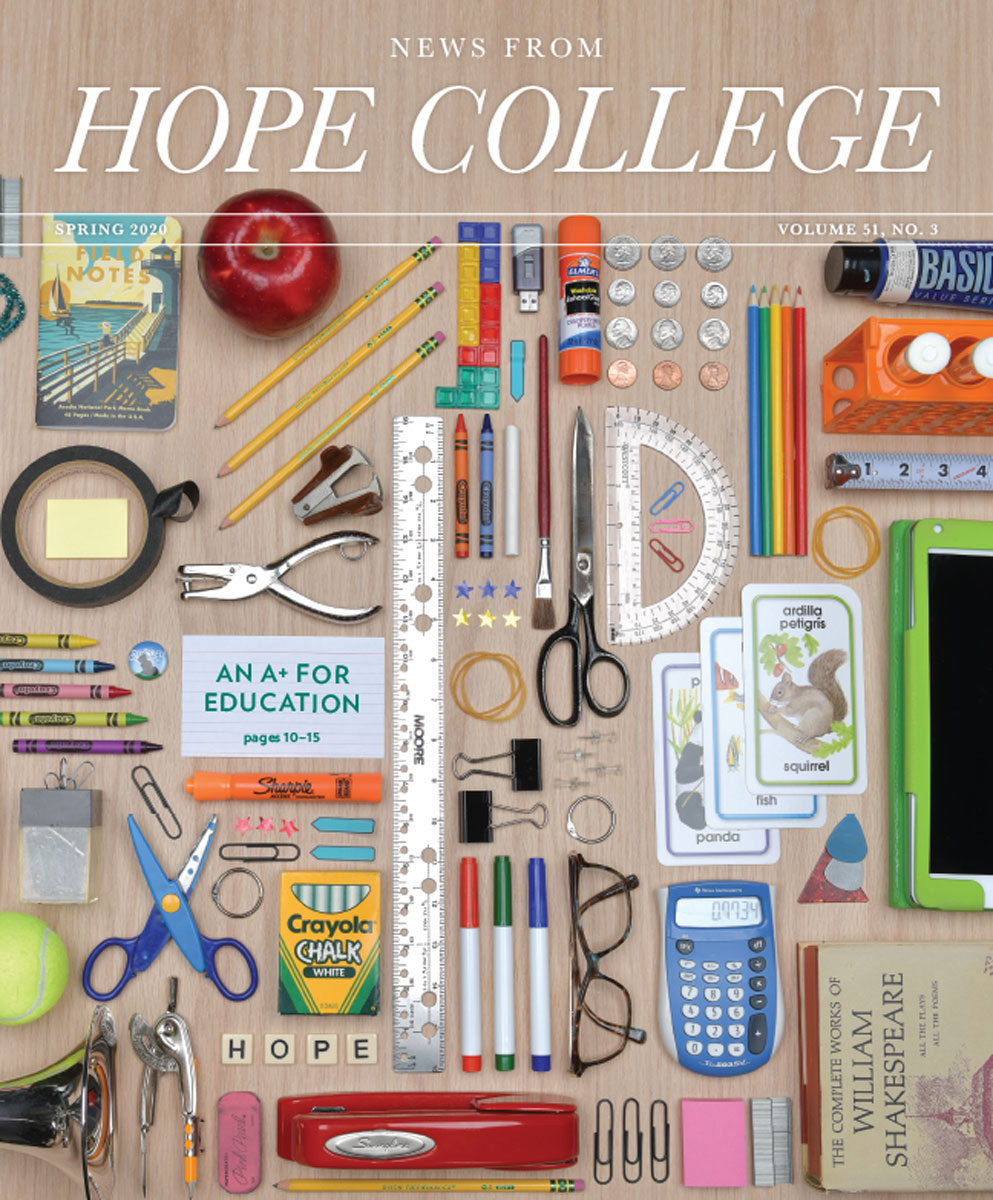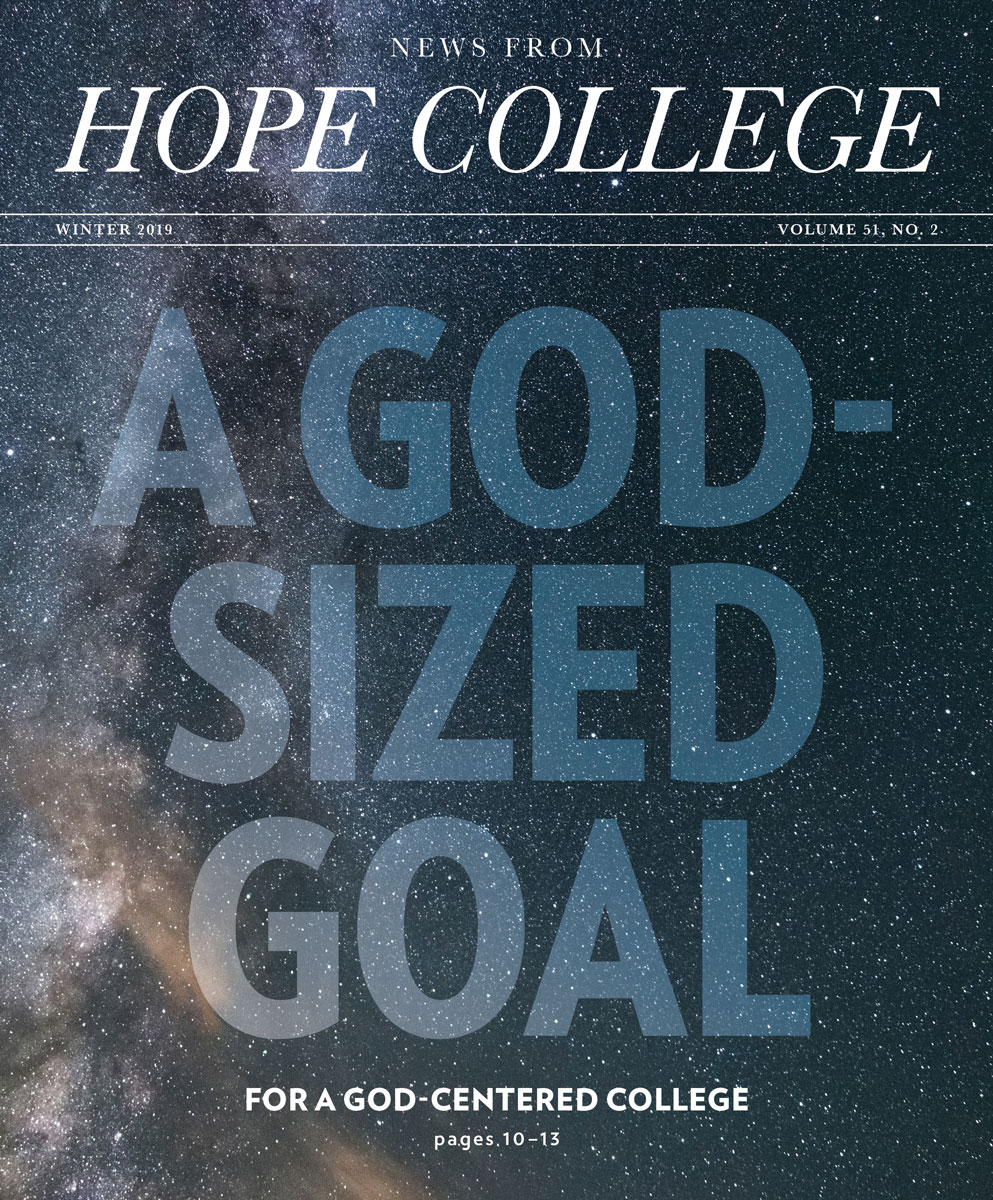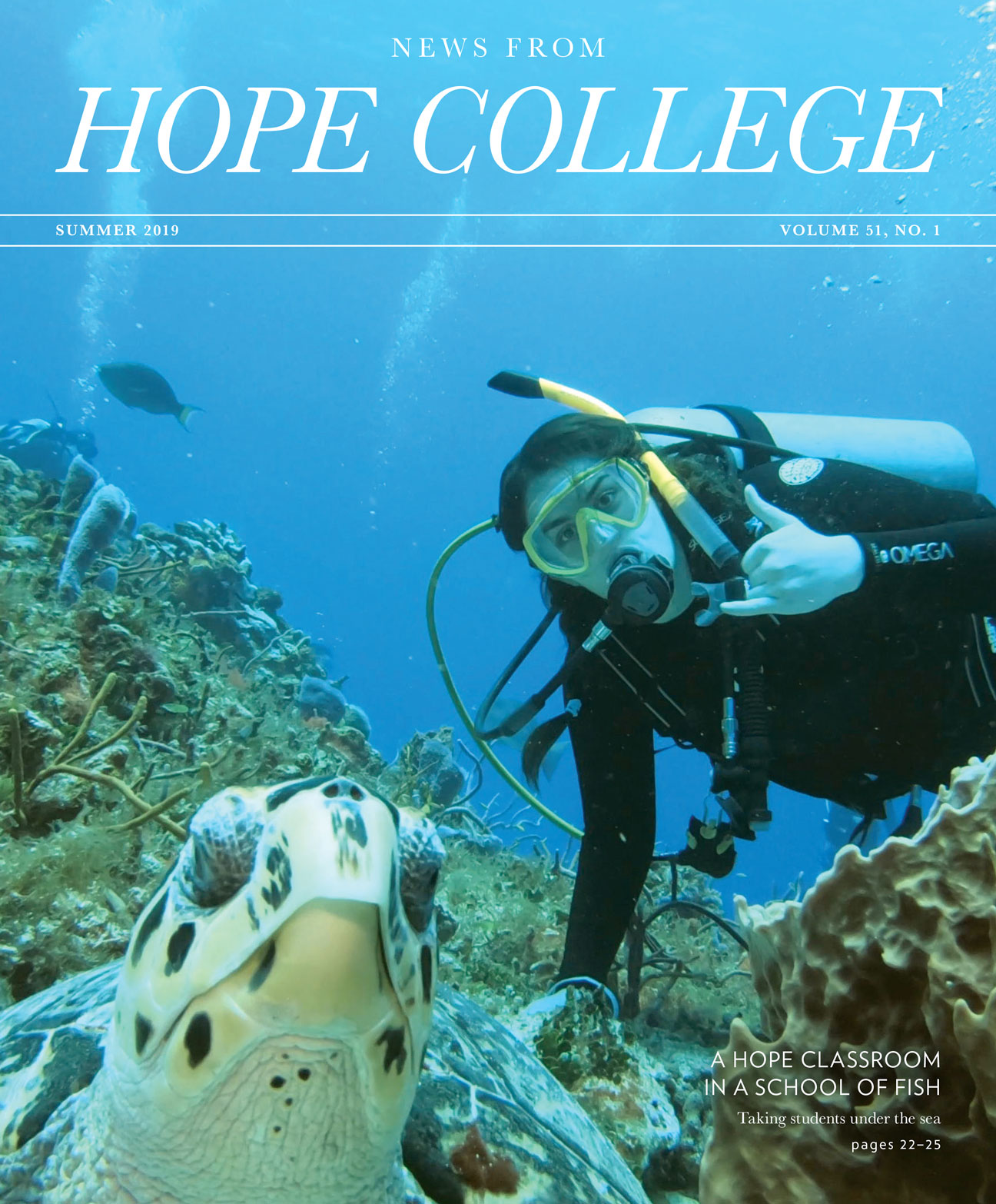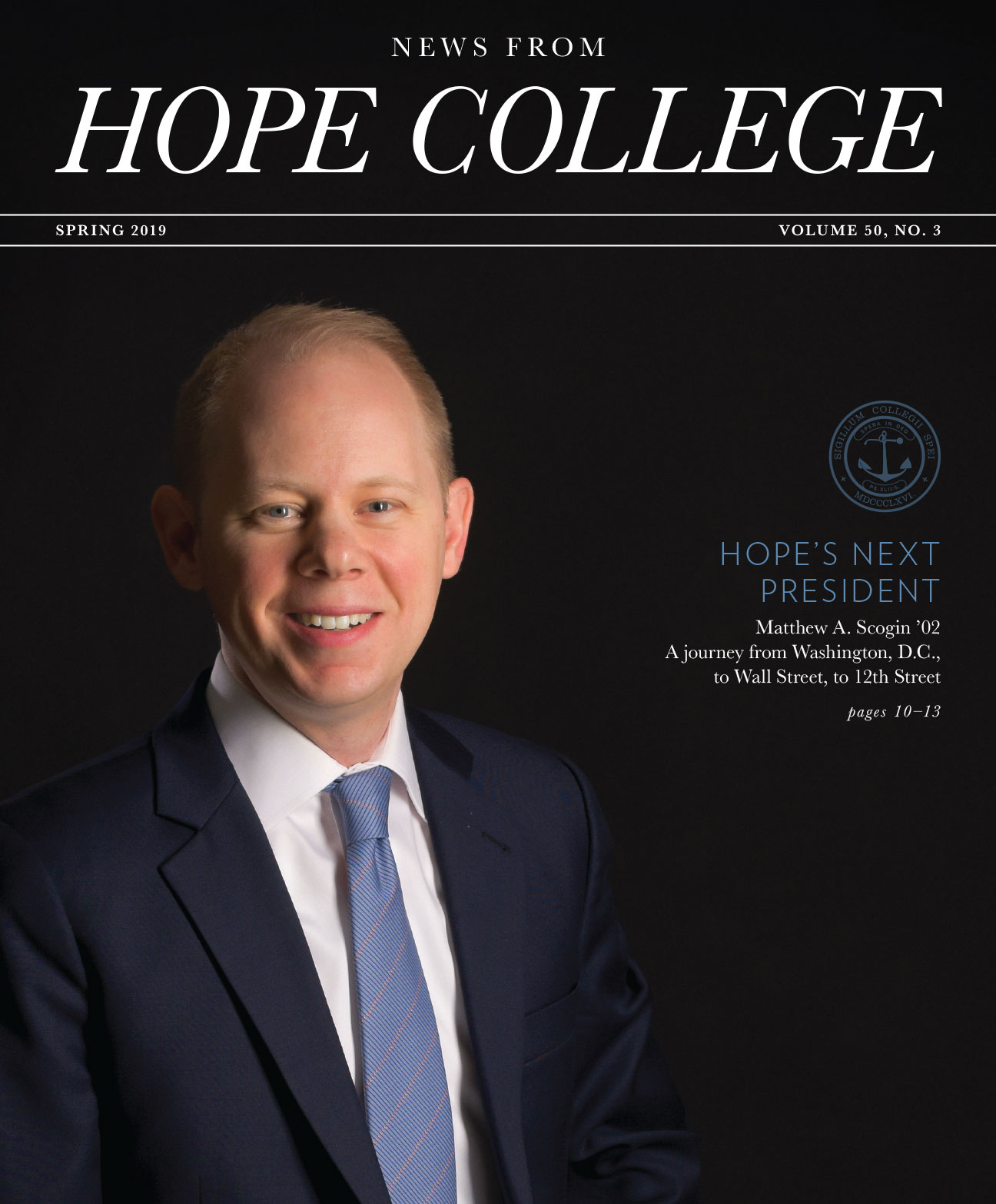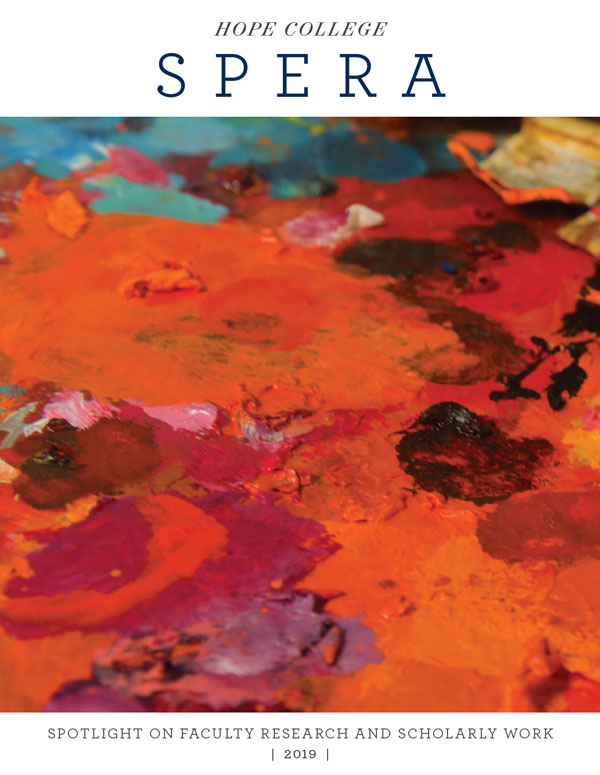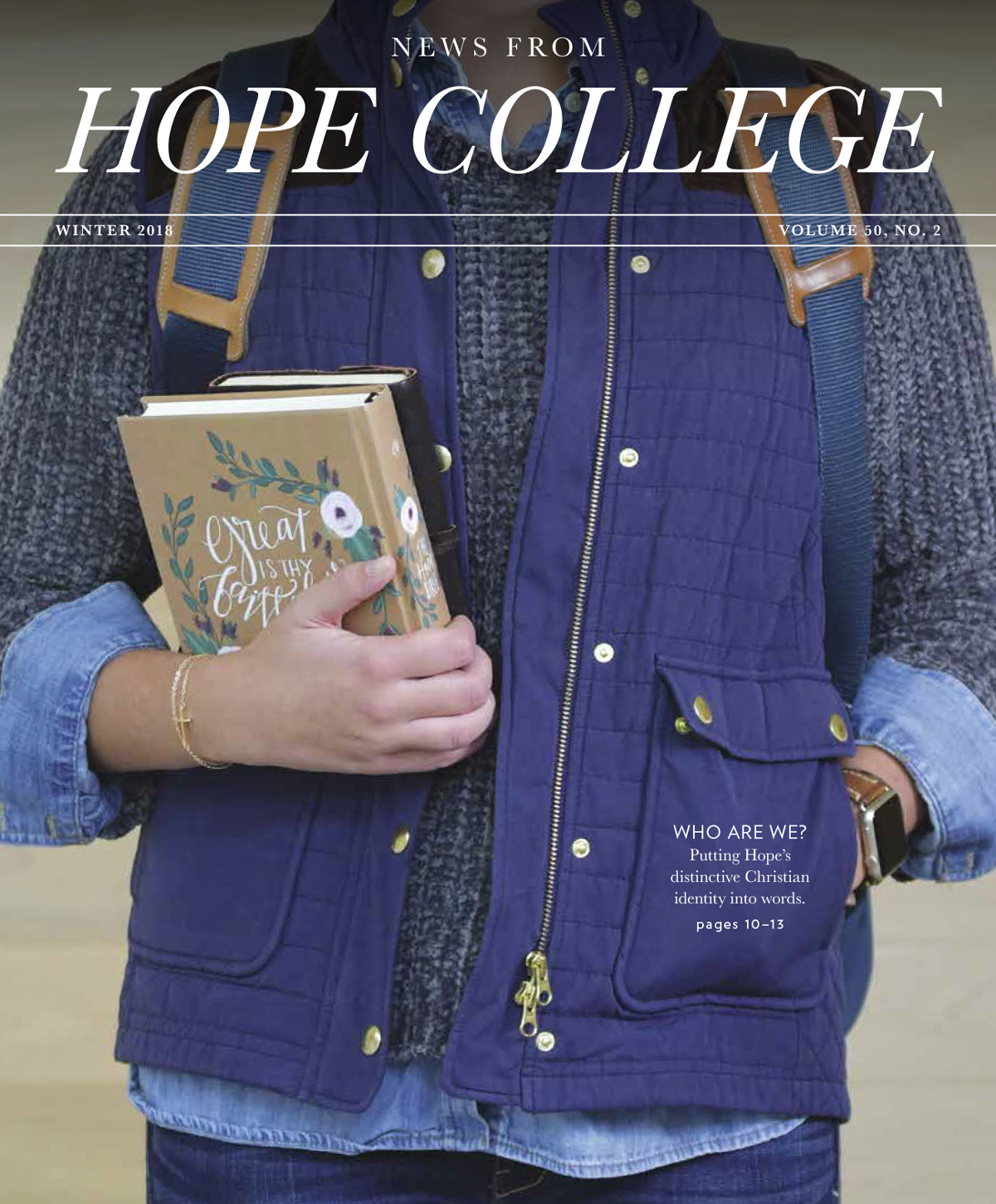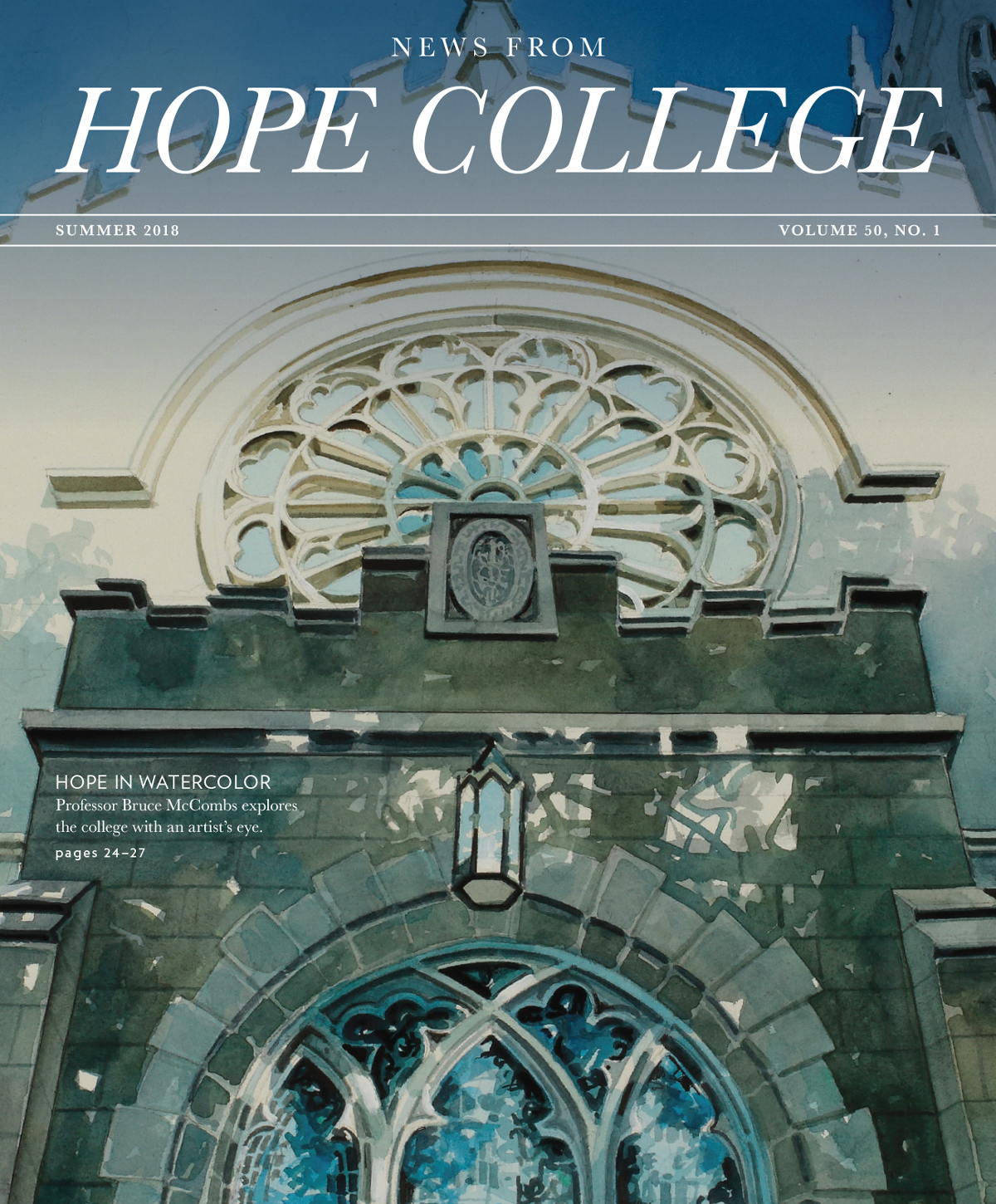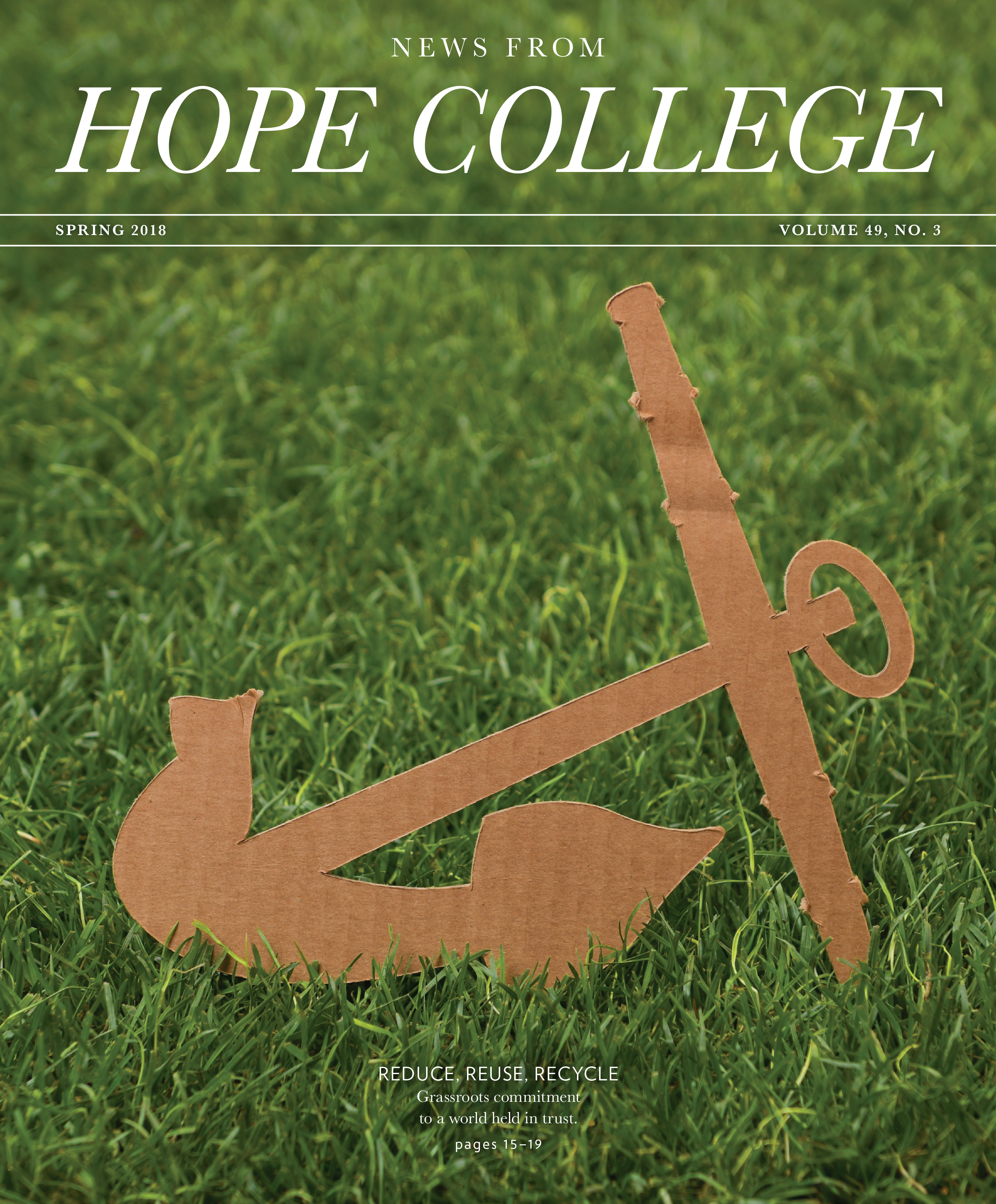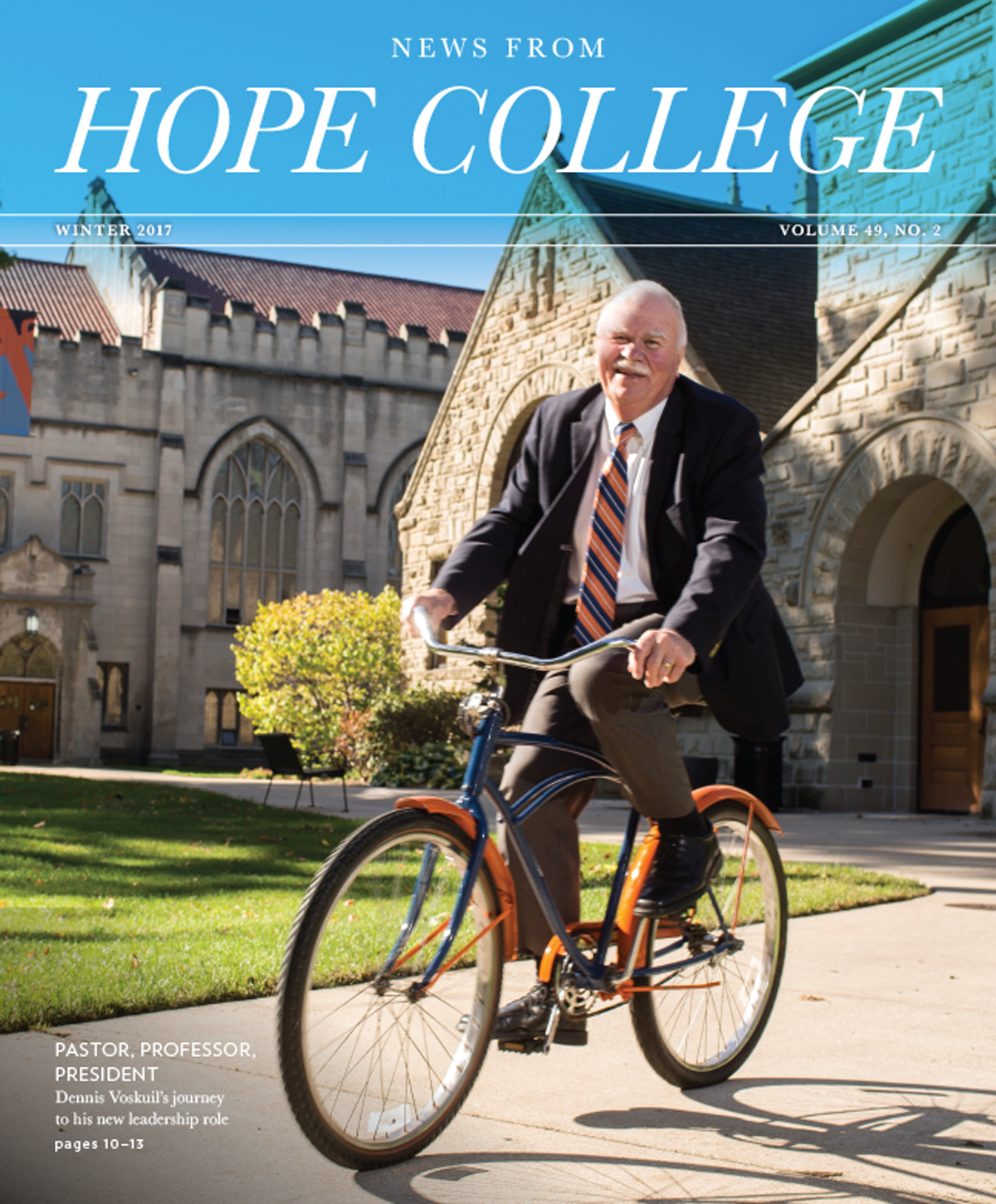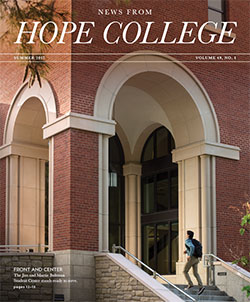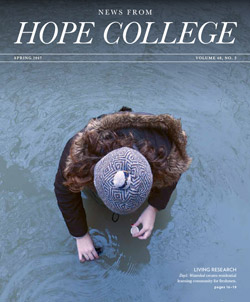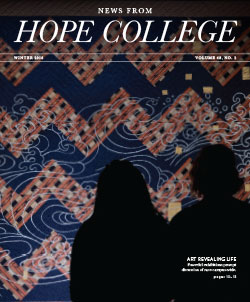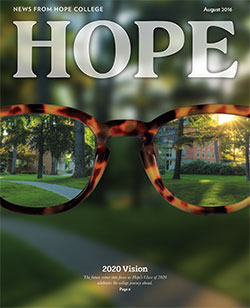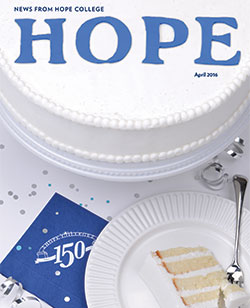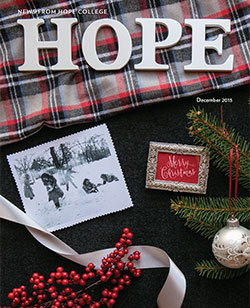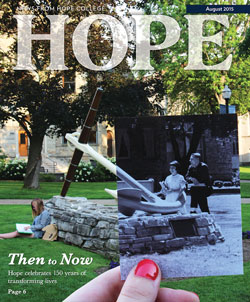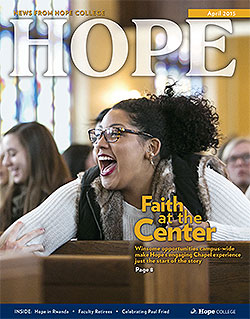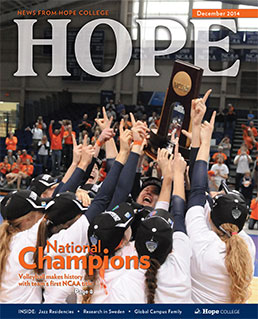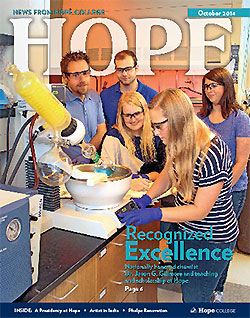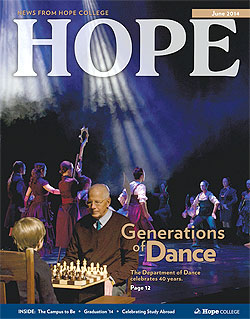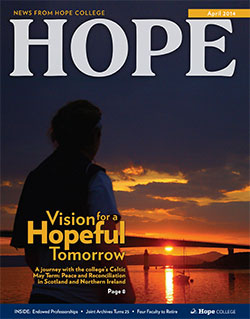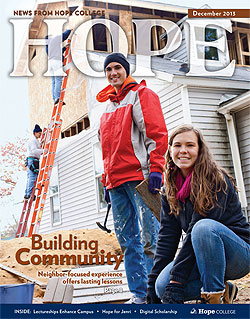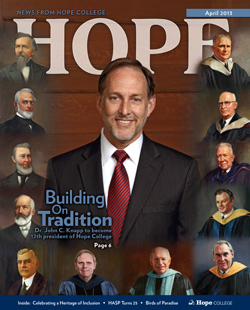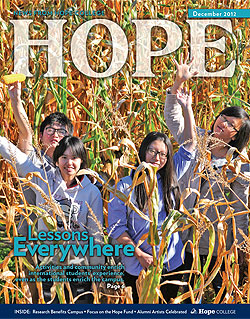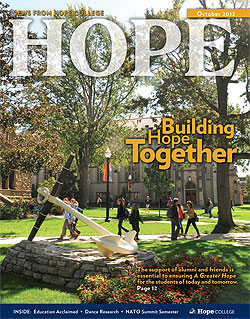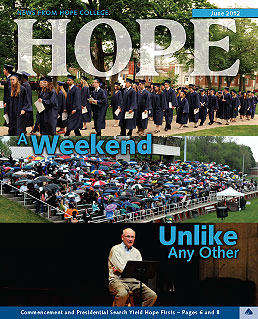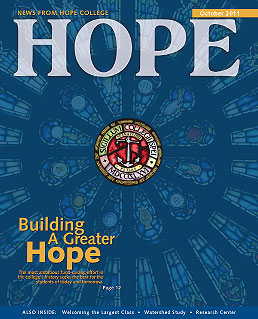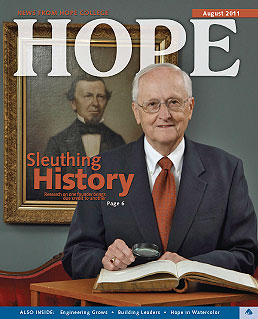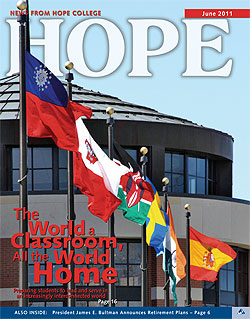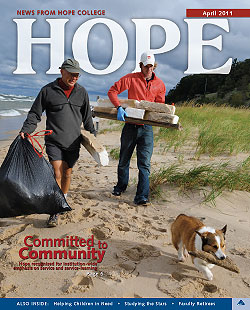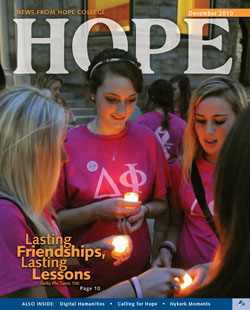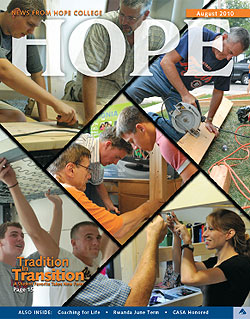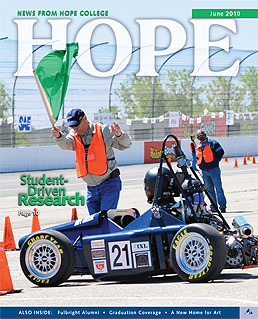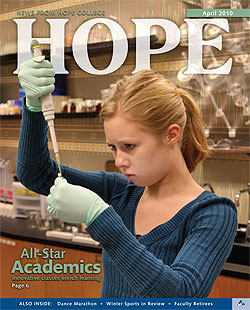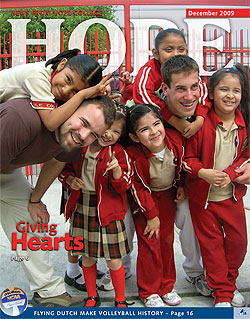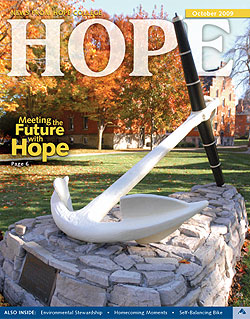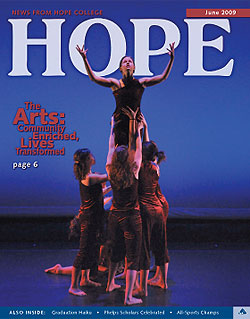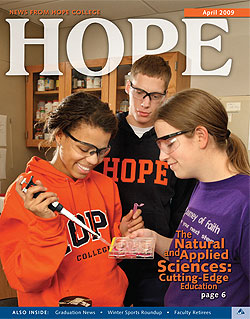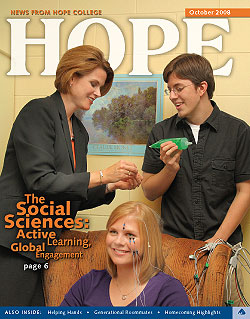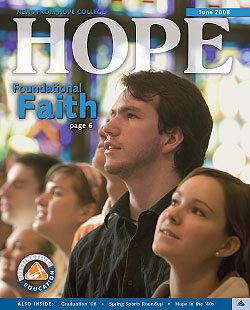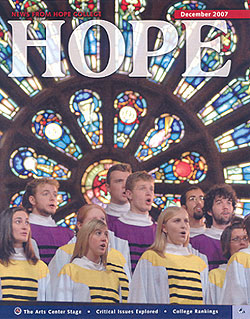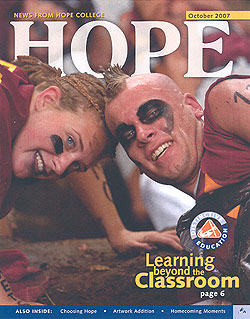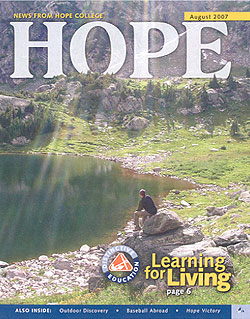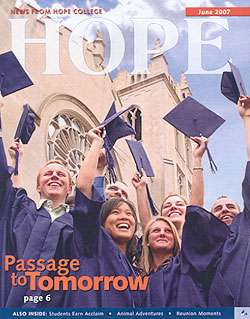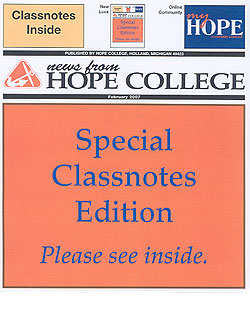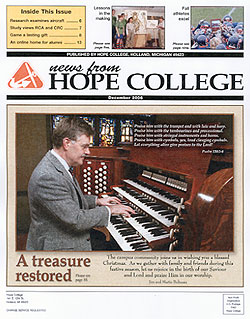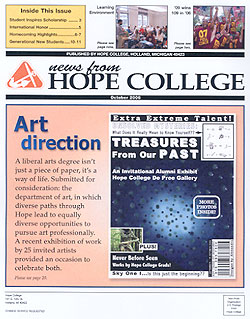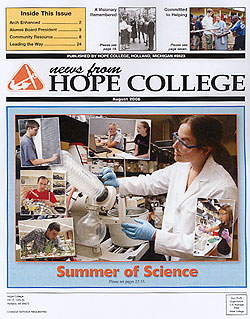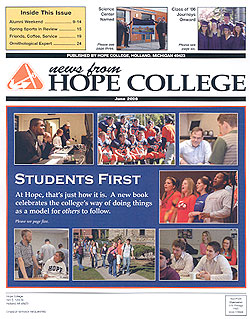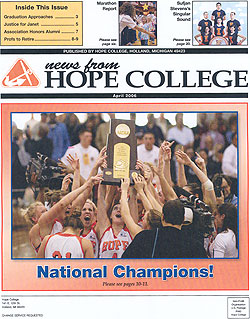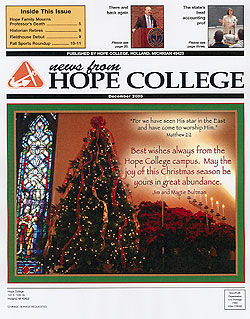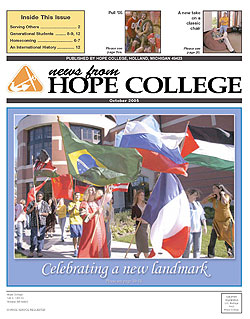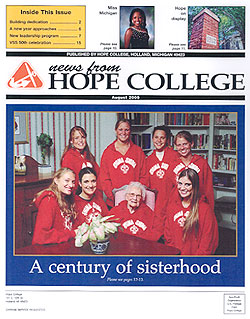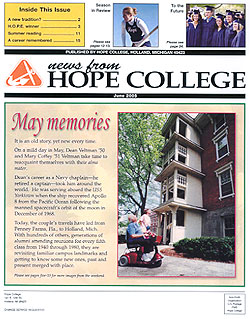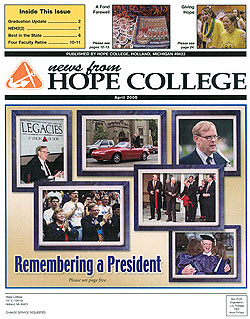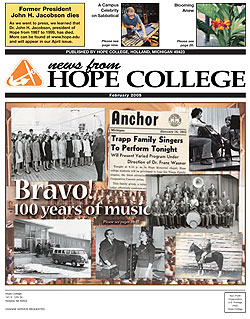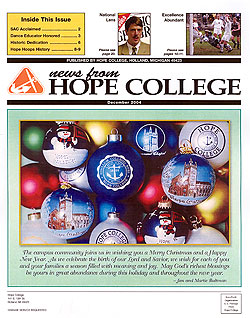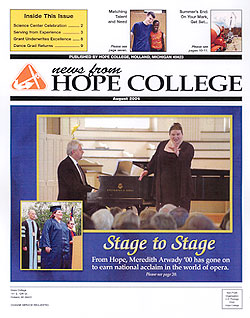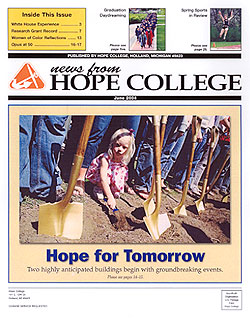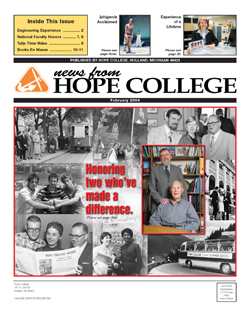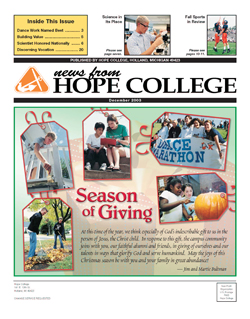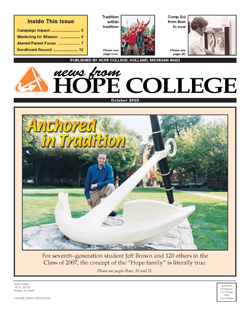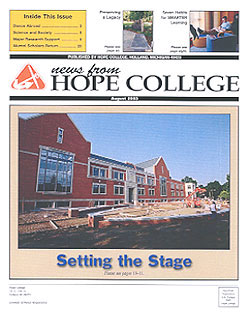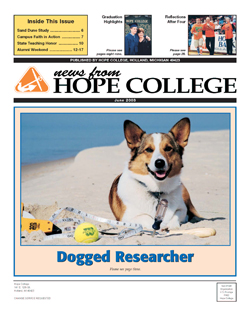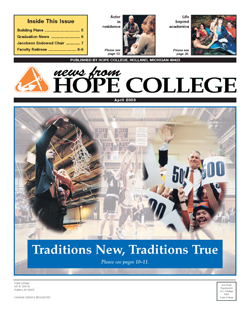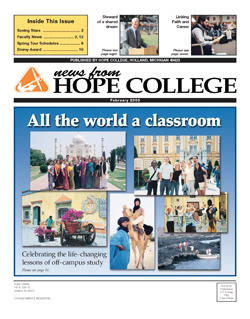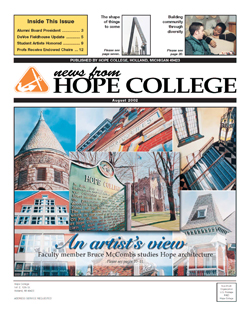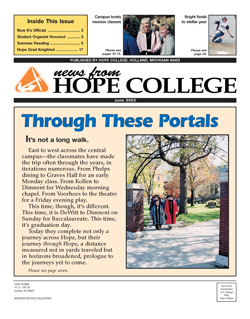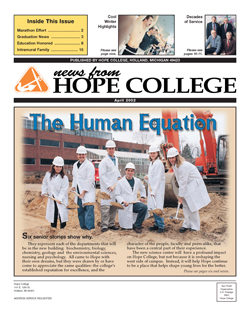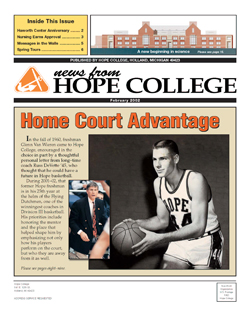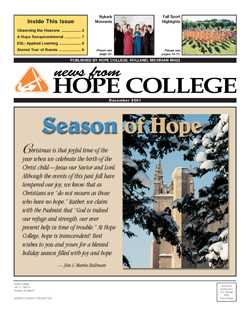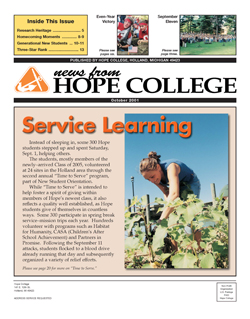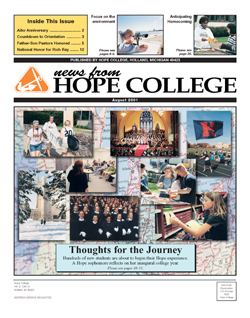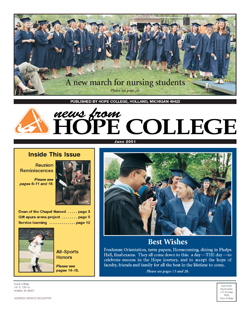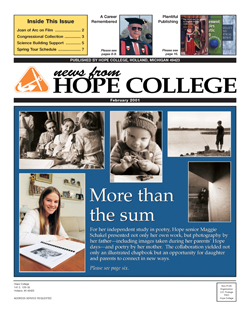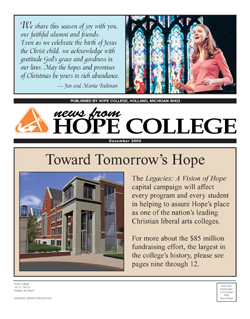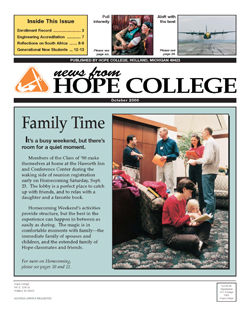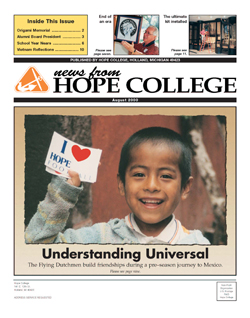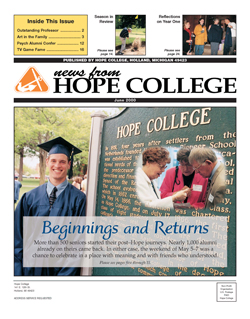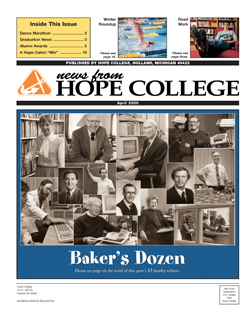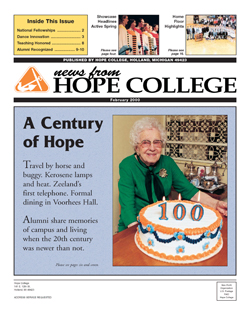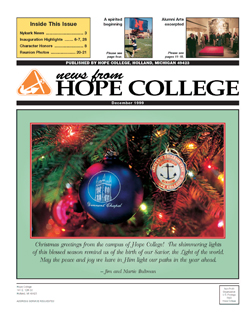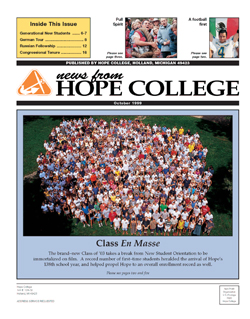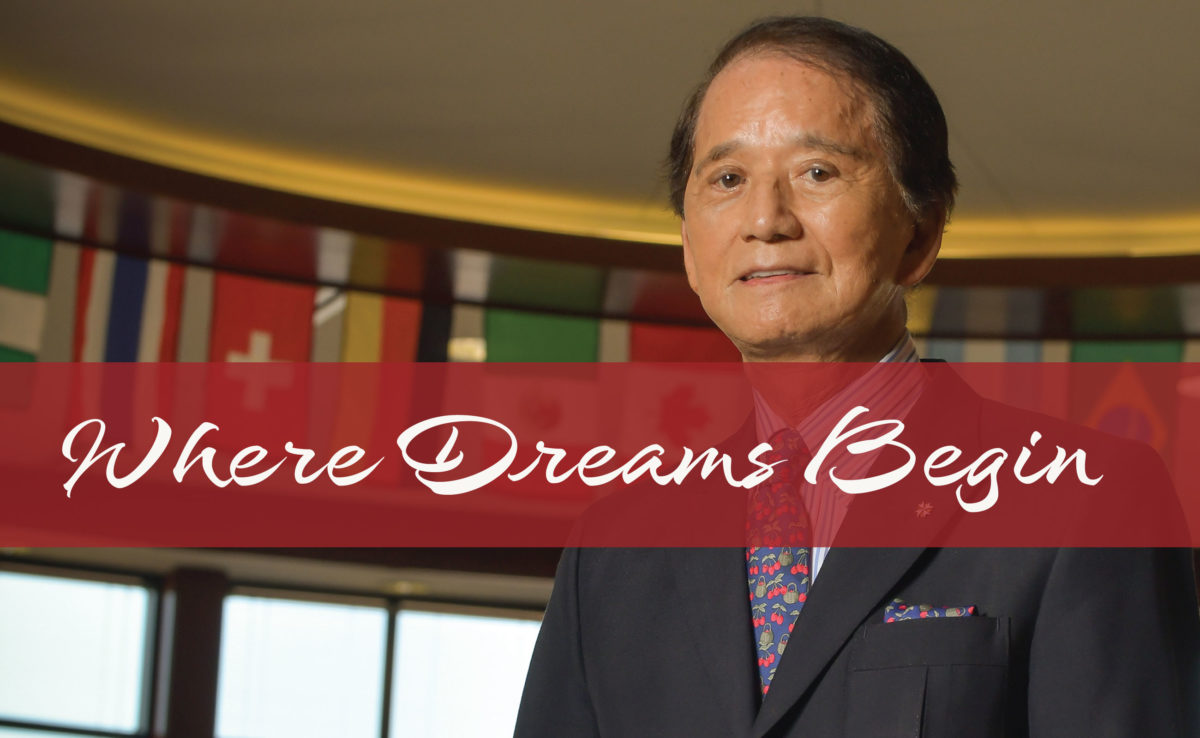Where Dreams Begin
In post-war Japan in the 1950s, Maurice Kawashima was an orphaned teenager who took a well-deserved break from supporting himself and from his studies and went to the theatre to watch Stagecoach, the classic 1939 film starring Claire Trevor and John Wayne. Someday, he thought, he’d like to visit the nation that he was seeing depicted on the screen.
In the decades that followed, he not only achieved that dream but became a U.S. citizen and an internationally acclaimed, New York-based fashion designer and respected educator.
His journey left him with an abiding appreciation of the help that he received along the way, determined to do the same for others and committed to fostering international understanding. It’s why he’s been involved with Hope as a friend of the college for more than 30 years. He’s made a lasting difference to generations of students through gifts to the college of Japanese ceramics, art books and — in the spirit of Hope Forward — a scholarship that enables a student from Japan to attend Hope and a student from Hope to study in Japan.
“In a way, I believe that Maurice is an example of Hope Forward, in that he was an international student with very little means, someone helped him, he remembers, and now he wants to help students,” said Alfredo Gonzales ’75, retired associate provost and dean for international and multicultural education, who has known Kawashima for decades.
“He experiences devastation, hunger and chaos during and after the war. The question for me is, ‘What does one do with the weight of those experiences?’” Gonzales said. “Rather than looking at what happened or feeling anger over it, he grows a passion to help, as best he can, the next generation of leaders that will bring understanding both in Japan and the United States. It’s quite remarkable, to say nothing about all the other things he was able to accomplish as a distinguished designer that at one time had lines of clothing in 75 stores in Japan.”
Kawashima was born in 1936 in Kawaguchi City, Saitama Prefecture, Japan. At age two, he lost his father. Seven years later, his mother died. He subsequently moved in with his grandmother, who lived in Tokyo. It was World War II, when one air raid alone is estimated to have destroyed 16 square miles of the city, killed 100,000 civilians and left more than 1 million homeless.
“Toward the end of the war, I went through the bombings,” Kawashima said. “Everything I observed…”
Although Japan would rebuild, the privation didn’t end with the war.
“I was 10 years old when the war was over, and all over Japan were the poor — people were sleeping on the floor of the train station,” he recalled. “I lost my parents at an early age, so I had to work.”
Maurice Kawashima has made a lasting difference to generations of students through gifts to the college of Japanese ceramics, art books and — in the spirit of Hope Forward — a scholarship that enables a student from Japan to attend Hope and a student from Hope to study in Japan.
He worked in a store selling cameras, and at a take-out hamburger grille. He provided catering for the airport.
While in high school, he also attended an exhibition hosted by Christian Dior and fell in love with the beauty of fashion. He earned his bachelor’s degree from Bunka College of Fashion in Tokyo, and in 1961 left for New York to attend the Fashion Institute of Technology.
He had little money, but the vice president of the institute helped him. While he was a student there, the owner of a fashion house gave him a chance to present his designs — and purchased several, the beginning of his career. A former professor also encouraged him to pursue his interest in teaching.
“All this experience boils down to: I have to help students,” he said. “People helped me, and it’s my responsibility.”
He earned an associate degree in applied science from the Fashion Institute of Technology (part of the State University of New York/SUNY system), and a certificate from Parsons School of Design in New York. Immediately after graduation from Parsons, the Fashion Institute of Technology offered him a full-time teaching position, and across the years which followed he became the first Japanese-born person to be granted a full professorship with tenure at the institute.
Alongside his teaching, Kawashima achieved distinction as chief designer for Daimaru Inc., in Japan; as a designer for Elizabeth Arden Sales Corp., in New York; and as an assistant designer for Pauline Trigere, in New York. In Japan, he established the Safari Line for Suzaya Company and established his own fashion company, Masaaki New York. He also authored several books, including the Fundamentals of Men’s Wear Fashion Design, Standard Text of Pattern Design, and Men’s Outerwear Design—Fundamentals of Pattern, and holds three patents for special measuring instruments used in the fashion industry.
He became an avid art collector as well. He purchased his first two pieces — antique porcelain — while in Japan to deliver a lecture. Today he has some 23 collections, a variety that includes not only Japanese ceramics from the 8th century through the present, but English Fairyland porcelain of the 1920s, and English and American bronzes, among others. “For me, each piece is a memory — the time I bought it, where I bought it,” he said. His collections have been exhibited in venues including the San Diego Museum of Art, of which he was on the Board of Trustees for more than 20 years; the Long Beach Museum of Art; and the gallery of New York’s Japan Society. His collection of porcelain by acclaimed Japanese artist and gourmet Rosanjin Kitaoji toured in Japan to an enthusiastic response. The college’s De Pree Art Center and Gallery has exhibited his porcelain three times, in 1993, 2002 and 2004.
All this experience boils down to: I have to help students. People helped me, and it’s my responsibility.
Kawashima especially treasures the relationships that all of his experiences have made possible.
“I was exposed to so many interesting people,” he said. As unlikely as it would have seemed in that Tokyo movie house in the 1950s, he eventually even met Trevor and came to count her among his circle of friends. “Claire was a wonderful lady,” he recalled.
It was another of those friends, Dr. Richard P. Wunder, who introduced him to Hope. Wunder was a prominent art scholar whose career included serving as a senior research fellow and curator with the Smithsonian Institution, and had himself learned about Hope through a friend: John Dryfhout ’64, long-time superintendent of the Saint-Gaudens National Historic Site in Cornish, New Hampshire With Dryfhout’s encouragement, Wunder donated more than 15,000 books and other materials, most in art and art history, starting in 1984 and continuing through his estate following his death in August 2002. In recognition of their professional accomplishments and service to Hope, the college presented both Kawashima and Wunder with honorary degrees in 1999.
Retired since 1990 and now living in Palm Springs, California, Kawashima has received several national and international awards in recognition of his work and contributions in fashion and art. He was knighted by Queen Elizabeth II of Great Britain as a Commander brother in the Venerable Order of St. John of Jerusalem, the first Japanese to receive the honor.
Visiting the Hope campus this past August, he was envisioning additional ways that he might play a role in enriching students’ experiences, perhaps by sponsoring cultural presentations such as demonstrations of the Tea Ceremony, or performances of chamber music or kabuki dance theatre. Whatever form that takes, ultimately he hopes that he can help equip and inspire their journeys, just as others helped him with his.
“I think younger people should make a goal and just go: Be brave,” Kawashima said. “If you can achieve one tenth of what you dreamed, it’s a success.”
Peruse Maurice Kawashima’s collection in the Kruizenga Art Museum online catalog →
